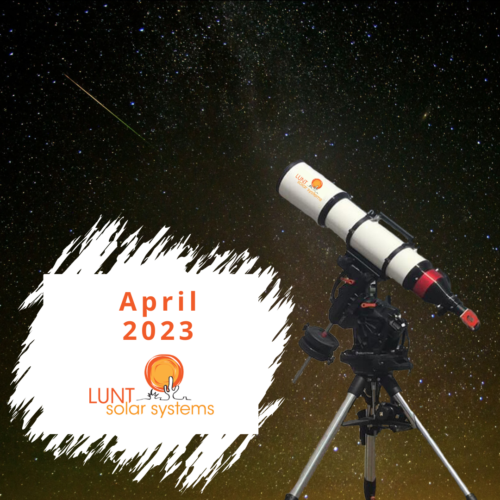
Shortly after midnight on April 6th our Full Moon reaches full illumination. This Pink Moon will appear full for 3 days. According to alamac.com This means that April’s full Moon is the Paschal Full Moon—an important Moon to those who celebrate Easter, since Easter’s date depends on the date of the Paschal Full Moon.
Next up on April 11th is Mercury at is Greatest Eastern Elongation. Earthsky.org tells us that not all elongations are created equal. Some are better or worse depending on the time of year they occur. For those of us in the Northern Hemisphere Aprils evening elongation will be best. While the Sourthern Hemisphere saw their best evening elongation in back January.
April 20th is a special day indeed. It is host to the New Moon of course but also brings us a Hybrid Solar Eclipse!! At Lunt Solar, we love a good Solar Eclipse, in fact our equipment will be in Australia with Southern Illinois University team members at the helm. We can’t wait to see their images. But what is a Hybrid Solar Eclipse you ask? Timeanddate.com tells us that this type of solar eclipse can look like an annular solar eclipse or a total solar eclipse depending on where the observer is within the eclipse path. During this type of solar eclipse, the Earth’s curvature brings some sections of the eclipse path into the Moon’s umbra, the darkest part of its shadow that creates total solar eclipses, while other areas remain outside the umbra’s reach, causing an annular eclipse. Nothing cooler than that!
The night sky will be showing off for us too! Point your eyes sky ward on the night of April 22nd into the 23rd and watch as the Lyrids Meteor Shower peaks. Space.com predicts visibility will be good for this shower as the Moon will only by 6% illuminated during peak time. The shower is known for its luminous dust trains which can be observed for several seconds according to NASA. The Lyrids are associated with Comet Thatcher, a long-period comet that orbits the sun every 415.5 years, it last reached its closest approach to the Sun in 1861.